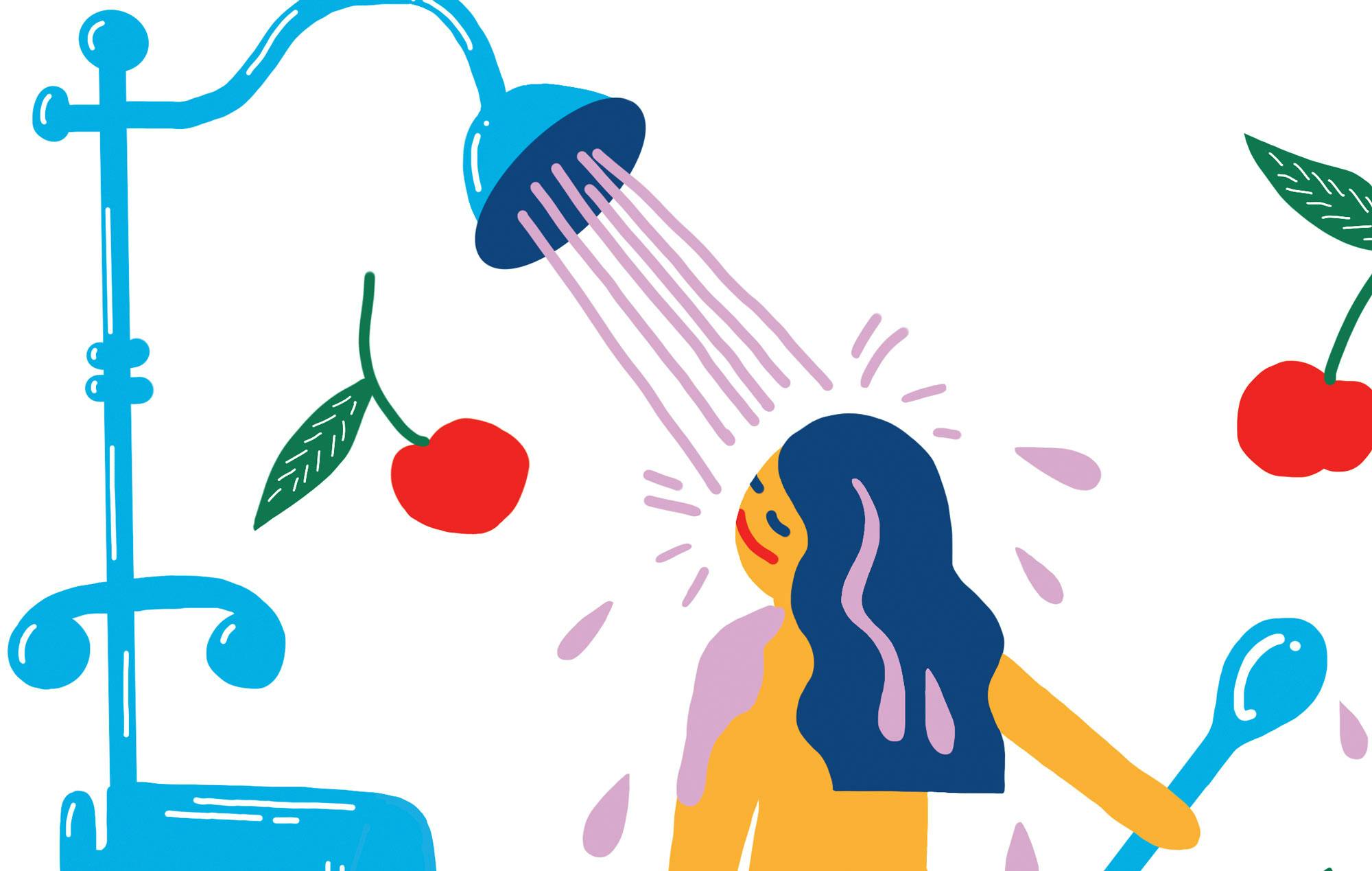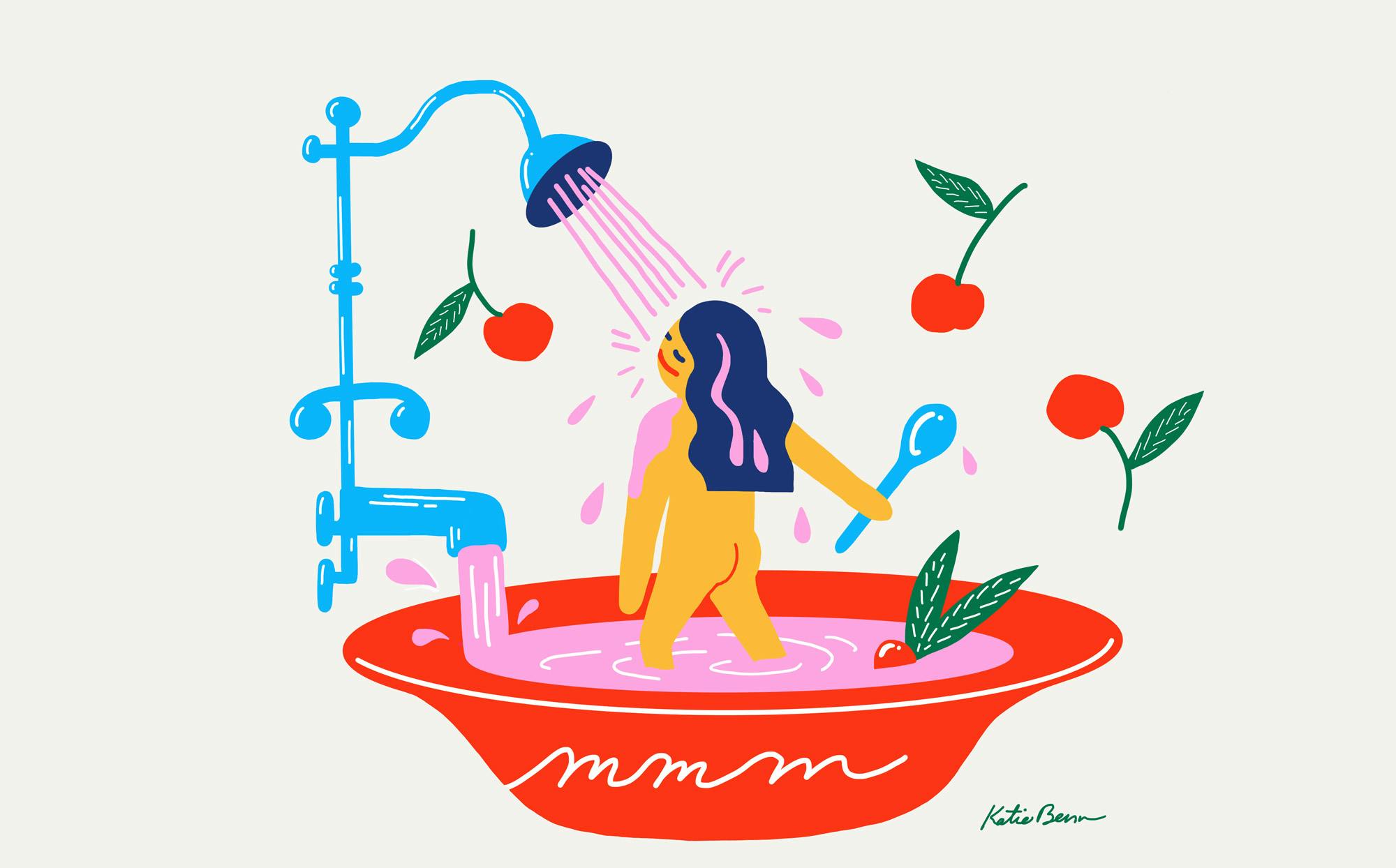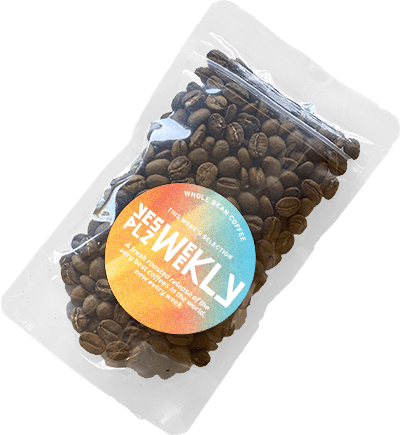SHARE
Notes from a Cold Soup Fanatic

Talia Lavin’s chilled, colorful deliverance from a New York summer
|
Culinary
Against the oppressive heat of August, there’s only one thing to do in the kitchen: become a fan of cold soup. An avid one. Unfurl the banner of cold soup fandom, and make it your own. Listen to me closely: You are now someone who loves cold soup.
Don’t listen to the naysayers. The people who tell you gazpacho is just glorified V8, and don’t even know any other cold soups to compare it to. They are fools, whose words, as Catullus once wrote, “are worth but a penny.” When it’s so hot that you want to crawl out of your clammy skin, when you gasp with relief in a cold shower and walking two blocks is a major project, there is absolutely no reason to have to turn your oven on. Cold soup is in abundance all around you. It comes in many, varicolored varieties, sweet and spicy and sour. It will be your salvation. Let your bowl be a cool chalice, filled with deliverance from the heat.
If I sound like a bit of a fanatic – a cold soup crusader – it’s simply because as much as I love sunshine, summer fills my whole fat self with dread. It’s a smelly, chafe-y, uncomfortable season for me in New York, muggy, with a pungent odor of hot trash radiating off the split sidewalks. Asphalt roasts in the sun and cracks like a Swiss roll; flecks of unidentified urban ash – grit particles – adhere to the sweat on your arms and legs. The beach is so crowded I feel pressed into the sea. The air always feels sour with held-in thunder. It was a season of permanent kvetching for me, until I found cold soup.
My first infatuation was gazpacho – the jumping-off point for most Americans. When I went with my Orthodox Jewish mother to Spain, we kept kosher in the land of Serrano ham. We ate cold, vegetarian meals exclusively, as tenderly aged hocks of pig hung all around us. The chief dish we ate, and ate, and ate, was gazpacho. But what knocked me backwards, gave me that triple-take rom-com moment of falling in love, was the variety known as salmorejo. It’s not the chunky, blood-red “glorified V8” I’d tried before; it’s a soft, butternut-looking orange, drizzled with olive oil and topped with cubed green peppers and hard-boiled eggs. The small, good secret – simple, like the best cooking secrets – is adding day-old crusty white bread to the fresh vegetables, and blending it all into one smooth spoonful. I made salmorejo when I came home. I made more. I made a pot so large I floated through one summer on salmorejo, my mouth full of salt, fat, acid and no heat at all.
From travels to Russia, Ukraine and Brighton beach, I picked up another cold soup, a simple and mystical concoction of kefir, chopped vegetables, egg and smoked meat. It’s called okroshka, for the verb “kroshit” in Russian – to cut up, because that’s all it requires. I tried it first at a place called Varenichnaya – dumpling house—one block from Brighton Beach. Coming off the hot, crowded sand, I stopped at the yellow awning, over which hung a sculpture of a Russian-dumpling pot, shaped like an orotund vase. I dove into a bowl, tart yogurt flooding my tongue, cubed cucumber snapping against my teeth. There are peppery radishes, too, filling every bite with spice. It leaves you sated; it’s crunchy and fresh and salty and good. It’s good food because it’s peasant food, food you’d get on a Soviet cafeteria line and be glad for, homely and unassuming and far better than it has any right to be. Like any good cold soup, it transforms its ingredients merely by combining them. For this reason, the ingredients must be delicately chosen, with an alchemist’s precision, and hope.
“It’s good food because it’s peasant food, food you’d get on a Soviet cafeteria line and be glad for, homely and unassuming and far better than it has any right to be.”
The newest cold soup I’ve learned to love is a Hungarian recipe, freshly acquired this summer during a long, obsessive search for cold soups. It is an unapologetic magenta. It is also a fruit soup, which is a divisive topic in the first place. The concept of sweet soup is uncomfortable, to some: it seems categorically unfit at first to the unadventurous palate, like sweet fish, or bitter ice cream. But cold sweet soup has its advantages, if you are daring. Meggyleves has just four ingredients. Together, they sing in perfect harmony, a barbershop quartet of flavor. Take halved, pitted sour cherries; a cinnamon stick; two lemon slices; and sour cream. Heat the cherries until their juice boils, with the lemon and cinnamon. Whisk a quarter-cup with eight ounces of sour cream; then pour the mixture into the pot, and chill. It’s tangy and lush and sweet, its color a defiant flag against a beatdown of a season.

Of all the world’s cold soups, these three are on rotation for me each summer, a way to contend with the throat-constriction of stress in the heat. At the beginning of September, I will turn thirty, and I have only three cold soups in my arsenal. The world is getting hotter, and fire and flood threaten us all as we walk through the world. Part of the battle is simply survival, attaining joy when its cost is small, and its results profound. A spoonful of good soup is a small weapon against despair, to be wielded over and over. As I complete the third decade of my life, I think of the world of cold soups out there for me, all those alchemical combinations. I think about vichyssoise and ceviche and chilled avocado puree. I think of their assembly, and the joy of experimentation, and the panoply of color in all the things we eat. I think of hunger and sating it, and repeating the cycle, and I face it in readiness, in joy.
Illustration by Katie Benn. @katie_benn_ is a painter, muralist, illustrator, and creator of zines and various art products, currently living in San Francisco.
Try a cup on us
Order A Sample

SHARE
